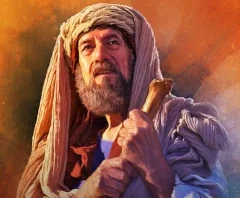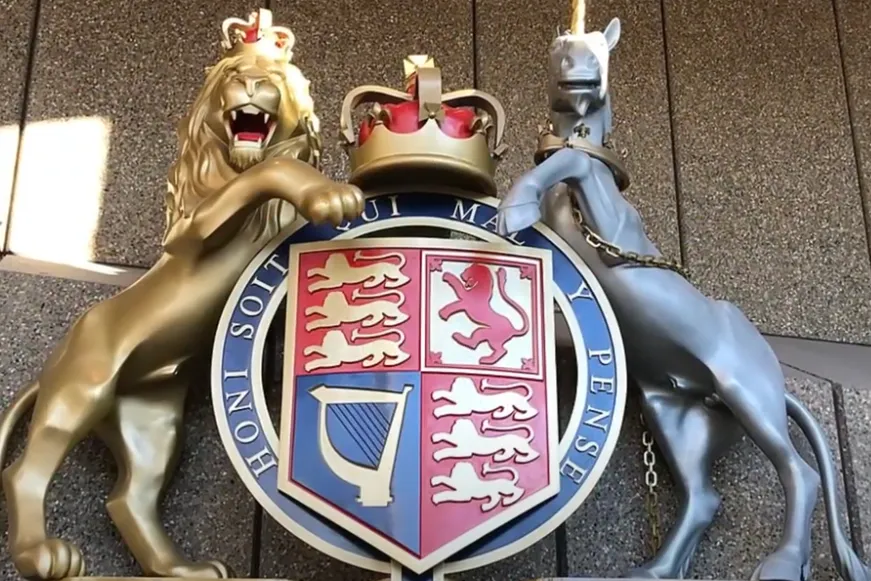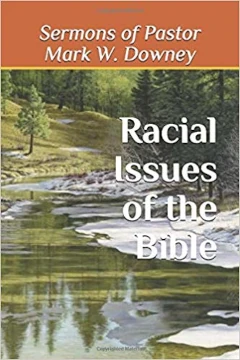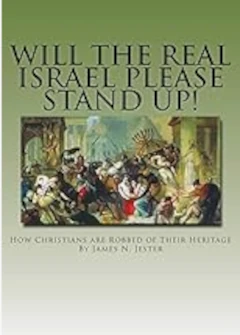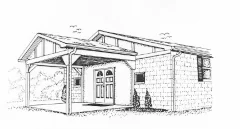The Death Of Our Saviour - Part 1
Video file
By Pastor Don Elmore
If you look at a Roman Catholic crucifix, have you ever wondered if it pictured the right thing—in other words, does it depict what our Savior looked like during his death? And the same goes for the many Protestant pictures of the crucifixion of Jesus Christ. Was it true that His skin remained smooth and that that He lost very little blood from the crown of thorns on His head and the side wound where He was stabbed and the nail imprintment on the hands and feet. But how does this fit in with the many scriptures like is found in Isaiah 52:14— "As many were astonied at thee: His visage [outward appearance] was SO MARRED MORE THAN ANY MAN, and his form more than the sons of men:…”The crucifix along with the pictures does not teach this at all.
Let’s go back a few decades before His death: Where did He live? We know that He was born in Bethlehem, a few miles to the north of Jerusalem. He was living in a house in Bethlehem when the magi from the east came and worshipped him followed by the order of the Edomite king to murder all the infants who were two years old and younger. He escaped this murderous attack and fled to Egypt, with His mother and father. Later, the went to Galilee (about 60 miles north of Jerusalem), after the death of King Herod. He lived in Galilee—why didn’t He live in Jerusalem?
The Scriptures tell us that Jesus came to Jerusalem to the Temple to keep the Feast Days, but there is no record of Him going to Jerusalem any other time. Why? The Gospels tell of incidents where the jews (Edomites) tried to stone him several times during the last days of His ministry. They were made so mad because they believed that He was guilty of blasphemy. During these times of the stoning of Jesus, nothing happened because Jesus quickly vanished and left them holding the stones in their hands with no target left to cast them upon (John 8:59 and John 10:30-33).
His disciples noticed this too. They even mentioned it when Jesus was set to return to Jerusalem. They wondered among themselves the decision of our Savior’s return to Jerusalem because they feared that the jews would stone Him AGAIN if He went there (John 11:8). And their fears were soon justified.
But the jews were under Roman authority—they were not allowed to murder anyone by their law. In the court scenes before the Roman Court System, we see this played out—the jews pushed hard the Romans to murder Jesus—but Pilate found Him not guilty. But the jews were so vocal and persuasive that they were told that they could murder Him according to their law (John 18:31).
The Talmudic law for blasphemy was stoning. So after the Romans put our Savior, along with two other criminals, up to crucify—the jews were allowed to murder Jesus Christ by casting small flint stones at Him for about six hours. Psalm 38:10-14 tells that He would be BLINDED. Can you imagine what they did to Him? Jesus was murdered in the most horrible way imaginable in all of history!
Six hours of throwing stones at the Son of God. The entire front part of his body—His head, including the eyes, chest, and legs were ripped apart so that there was very little flesh left over His bones—but no bone was broken.
And isn’t that what the Last Supper foretells? The unleavened bread is BROKEN—which represents His body. It wasn’t a smooth skin body; it was a blinded, marred Man who was on that tree dying for the sins of His people.
And the cup—foretells of the blood of our Redeemer. But this is an oxymoron—for there wasn’t that much blood spilled according to the story told by the mainstream churches. But doesn’t the truth help us to realize in a better way why the apostles emphasized that the House of Judah and House of Israel are justified through Christ’s blood?
It has always been a mystery why so much emphasis is given in the New Testament to the spilling of Christ’s blood, while in normal crucifixions little blood ever reached the ground. Only a small amount of blood would ordinarily have issued from Christ's wounds in His hands and feet while he was hanging on the tree.
But with the realization that Christ was also STONED with small sharp stones for almost six hours (on the front parts of His body) makes it easy to understand why Christ’s blood (as a theological symbol for the remission of sins) became an essential feature in Christian theology.
Do you remember that all three men crucified had to be dead before sundown? So the jews went to the Roman authorities to ask them for permission to break the legs of the prisoners so that they would die from suffocation—but Jesus was already dead. There was no need for them to break His leg bones!
Jesus died a lot sooner than those who were normally crucified. That was because He died of stoning. Crucifixion was a small part of His death—the main feature was stoning. It was the stoning that made Him more marred than any man. It was stoning that made Him blind. It was stoning that killed Him sooner than the other two men. It was stoning that shed His blood onto the ground. It was stoning the broke His body to shreds. It was stoning that was the penalty for blasphemy. But He was innocent of that and all charges.
The animal sacrifices that foreshadowed the death of Jesus Christ for the sins of the covenant people, was the BLOOD of the slain animal. It forgave the sins of the covenant people for one year—so wouldn’t our Savior and Redeemer have to shed His blood?
Wouldn’t it be great if the crucifix the Roman Catholics worshipped would show what really happened? It would be an ugly picture. The entire front part of His body was torn to shreds with the blood of His body being emptied at the bottom of the tree. A blinded butchered Man who was murdered by those who hated Him with all their heart. No other person was marred as much as our Savior was—no wonder He asked His Father if this was the only way to be the accepted sacrifice for His people. It was!

